Case study
High-speed Internet in coaxial networks using DOCSIS 3.0 miniCMTS = low-cost high speed-Internet.
We have successfully worked with one of our clients, LICAnet, to resolve their problem of providing Internet of speeds from 100Mbps and higher, which was blocked due to prohibition of installing fiber optic cable or twisted pair (UTP) cable in the building. Our client requested that we preserve the existing STA infrastructure without damaging and changing the building structure or TV broadcasting. Additionally, we were asked to develop a solution that would expand the existing selection of television channels.
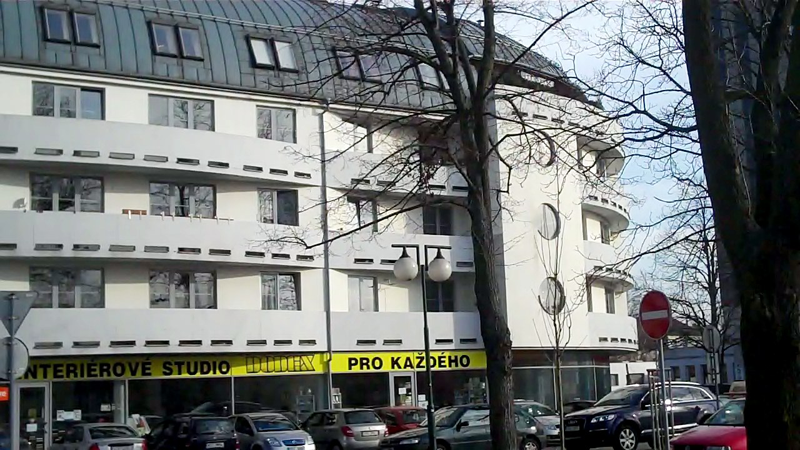
The existing coax cables, which were considered to be ideal broadband transmitters, were of unfamiliar quality and already 25 years old. Our first attempt to install our technology EoC, produced minimal results and improvements to the existing system. The market currently offers many proprietary solutions, which lack standards and do not enable changing the producer of the end-devices. DOCSIS is a common standard for the transfer of data within coaxial networks and achieves speeds of up to 50 Mbps per channel. Nowadays, it is common to have 8, 16, 24 or more channels. The price of these devices starts from approximately 300.000 CZK. In the case of our client, it was obvious that this investment into the repair of the network was required.
Luckily, during the World Trade Exhibition in Beijing we discovered products, which solved our problems: Pict. 2 miniCMTS and its dimensionsLevel 2 bridge MiniCMTS (see Picture 2) is compatible with DOCSIS 2.0 and DOCSIS 3.0 cable modems. This device is equipped with a 1Gbps input and a capacity of 16 downstream channels and 4 upstream channels at the output. Its housing is very compact, with consumption of 36W and the compatibility to be installed in almost any in-house environment. Supporting a temperature range of -20 °C up to +70 °C, there is no need to install cooling fans or any other type of cooling system. The overall dimensions are 271x384x162mm and weight of 6,7 kg. In our case study, we installed the miniCMTS in the hallway of the apartment building, into the electrical distribution board. At the output we installed the fiber optic cable through the 1Gbps media converter data link. MiniCMTS enabled us to connect the TV headend with the DVB-T signal, which has modulated DOCSIS down/upstreams. This combined channel pattern was connected to a common antenna coax cable (pict. 3). In our case, we used an antenna coax cable on the individual STA channels in order to optimize the input levels. Since LICAtv also offers paid TV services, we also added the data encryption system - CONAX. Lica is also a CONAX hosted system provided, and therefore able to scramble paid channels as well.
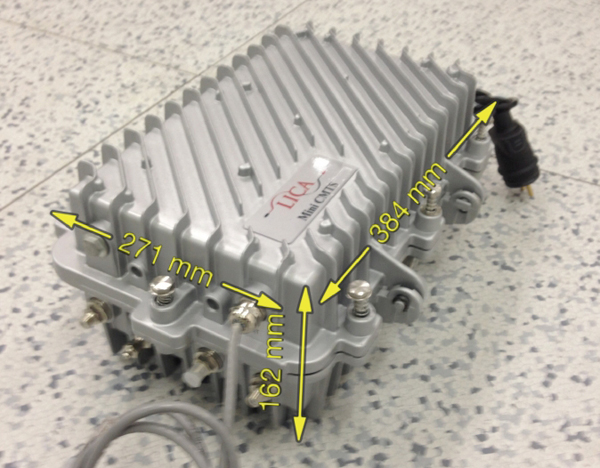
The final frequency plan included:
- Range 5 – 65 MHz: 4 channels upstream /32 Mbps (with the possibility to upgrade to 100Mbps);
- Range 87 – 108 MHz: FM radio;
- Range 230 – 470 MHz (former S channels): miniCMTS (operating on 8 downstream channels in the mode QAM256, i.e. 280Mbps; we assume the increase in modulation to QAM256, which SNR allows);
- Range 470 - 862MHz: is dedicated to DVB-T and other paid TV channels included within DVB-T.
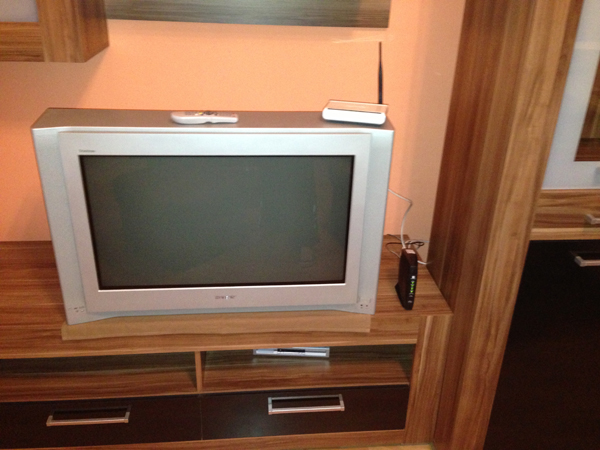
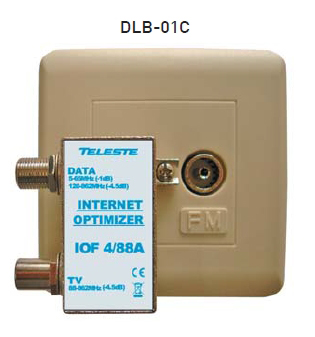 The installation in flats was easy and without complications. Using the existing outlets we installed the so-called „TV optimizer“(see Picture 4), which ensured that the diplex filter with an "F" connector for standard cable modem connection. In this specific case, the use of a typical Ethernet hub was not possible, as it did not achieve the required Signal to Noise Ratio (SNR). Each flat was provided with a standard cable modem. The advantage of our solution with DOCSIS is easy access to the cable modems from well-known producers. We tested both EuroDOCSIS 2.0, as well as EuroDOCSIS 3.0 modems from Motorola, Cisco, and ARRIS. For EuroDOCSIS 2.0 modems without a loading balance, we achieved 20Mbps downstream. For EuroDocsis 3.0 modems 8D/4U, downstream speeds reached approximately 300Mbps.
The installation in flats was easy and without complications. Using the existing outlets we installed the so-called „TV optimizer“(see Picture 4), which ensured that the diplex filter with an "F" connector for standard cable modem connection. In this specific case, the use of a typical Ethernet hub was not possible, as it did not achieve the required Signal to Noise Ratio (SNR). Each flat was provided with a standard cable modem. The advantage of our solution with DOCSIS is easy access to the cable modems from well-known producers. We tested both EuroDOCSIS 2.0, as well as EuroDOCSIS 3.0 modems from Motorola, Cisco, and ARRIS. For EuroDOCSIS 2.0 modems without a loading balance, we achieved 20Mbps downstream. For EuroDocsis 3.0 modems 8D/4U, downstream speeds reached approximately 300Mbps.
The entire installation scheme is depicted in Picture 6 and captures not only our practical but also the general and conceptual hook-up.
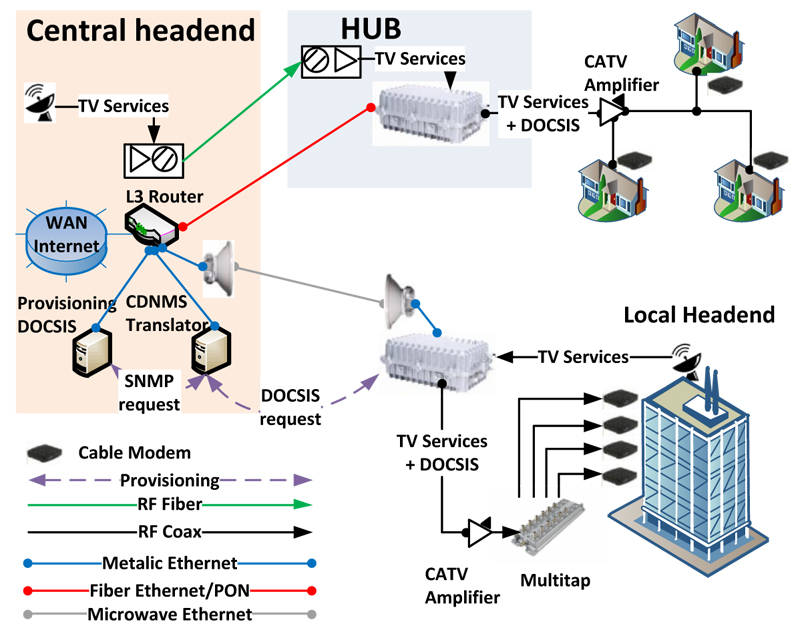 As you can see from the diagram, miniCMTS leverages the advantage of our fiber optic trunk line and enables us to provide Fast Ethernet extending over the existing coaxial network, which comprises of smaller cable TVs or connected TV antennas. MiniCMTS includes a Broadcom chipset with 16 downstreams and 4 upstreams. Scaling is not possible. The L2 bridge requires a L3 router and DHCP + TFTP server. For now, we used the 1Gbps Ethernet as our input, but we are also preparing a GePON ONU or optical SFP. For QAM64 modulation, the maximum speed in the downstream is approximately 560 Mbps. For QAM256 it is 800Mbps. From monitoring the device, the miniCMTS is equipped with an internal http GUI that allows local or remote setup. Additionally, we offer a CDNMS system, which allows remote monitoring and set-up of the HFC as well as IP functions. In theory, miniCMTS is able to support up to 500 modems. However, our recommendation is to set a limit of 200 to 250 modems per device.
As you can see from the diagram, miniCMTS leverages the advantage of our fiber optic trunk line and enables us to provide Fast Ethernet extending over the existing coaxial network, which comprises of smaller cable TVs or connected TV antennas. MiniCMTS includes a Broadcom chipset with 16 downstreams and 4 upstreams. Scaling is not possible. The L2 bridge requires a L3 router and DHCP + TFTP server. For now, we used the 1Gbps Ethernet as our input, but we are also preparing a GePON ONU or optical SFP. For QAM64 modulation, the maximum speed in the downstream is approximately 560 Mbps. For QAM256 it is 800Mbps. From monitoring the device, the miniCMTS is equipped with an internal http GUI that allows local or remote setup. Additionally, we offer a CDNMS system, which allows remote monitoring and set-up of the HFC as well as IP functions. In theory, miniCMTS is able to support up to 500 modems. However, our recommendation is to set a limit of 200 to 250 modems per device.
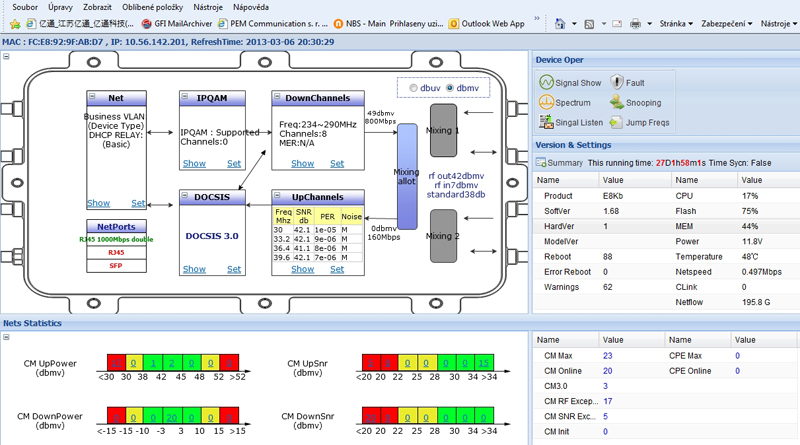 From the Network Operator’s point of view, this technology is simple and can be considered for smaller CATV networks as well as common antenna systems, where it is costly or technically challenging to install fiber optic or twisted pair cables. Its usage is also ideal for the hospitality sector, i.e. hotels, hospitals, and accommodation housing. Currently, the market offers many cable modems for EuroDOCSIS 2.0 (approx. 20 USD) and EuroDOCSIS 3.0 (approx. 65USD).The cost of purchasing miniCMTS (model 16D/4U) is approximately 5,000 USD, excluding the integration services and SLA. MiniCMTS's robust housing allows installation in almost any environment. Integration into a common antenna system or cable network is quite simple and can be conducted by even a smart antenna man. Integration into IP environments requires knowledge of ISP Operator, who can configure the additional components required (router, DHCP + TFTP server etc.).
From the Network Operator’s point of view, this technology is simple and can be considered for smaller CATV networks as well as common antenna systems, where it is costly or technically challenging to install fiber optic or twisted pair cables. Its usage is also ideal for the hospitality sector, i.e. hotels, hospitals, and accommodation housing. Currently, the market offers many cable modems for EuroDOCSIS 2.0 (approx. 20 USD) and EuroDOCSIS 3.0 (approx. 65USD).The cost of purchasing miniCMTS (model 16D/4U) is approximately 5,000 USD, excluding the integration services and SLA. MiniCMTS's robust housing allows installation in almost any environment. Integration into a common antenna system or cable network is quite simple and can be conducted by even a smart antenna man. Integration into IP environments requires knowledge of ISP Operator, who can configure the additional components required (router, DHCP + TFTP server etc.).
Our testing in a real network has been running for several months. Stability has been excellent, with no reboots or fundamental loss within the service. Where the operator has implemented basic screening of the coax network, the client easily achieves a SNR in the downstream of more than 40dB. From experience we know that for the operation of EuroDOCSIS 3.0 it is necessary to ensure SNR 35dB for QAM256 and 29dB for QAM64; below the 5dB band limit, DS exhibits incremental losses. Investing in quality components, and by replacing of the old "F" connectors with the new "Compression F-connectors, we have been able to achieve high-quality VF signals.
For details please visit:
www.lica.cz as well as www.minicmts.cz
made: 8.3.2013 by Ing. Petr Link, CEO LICA s.r.o. mail: petr.link@lica.cz
